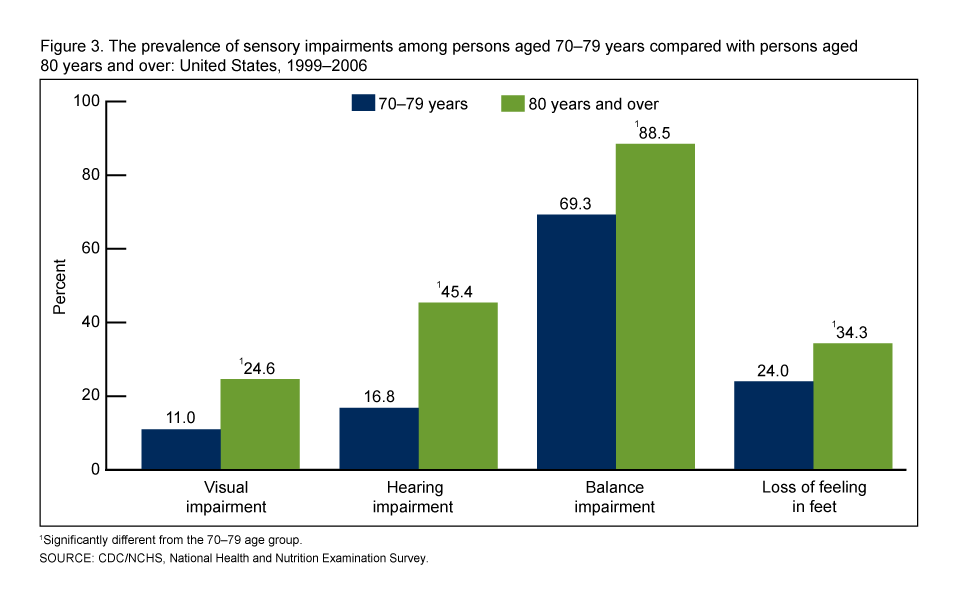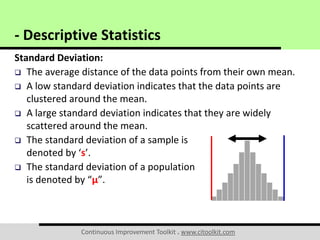Describe the Shape of the Data Using Descriptive Statistics
The most perceived kinds of descriptive statistics are proportions of focus. Descriptive statistics describe or summarize a set of data.

Descriptive Statistics Definition Charts And Graphs Statistics How To
This will show key information in a simpler way than.
. There are three major types of distribution in statistics. The information data from your sample or population can be visualized with graphs or summarized by numbers. For research involving a numeric variable of interest descriptive statistics of the variable are frequently presented at the beginning of a journal article or other.
Descriptive statistics comprises three main categories Frequency Distribution Measures of Central Tendency. A data set is a collection of responses or observations from a sample or entire population. The shape of the data represents the distribution of the data throughout the range.
Definitions of Statistics Probability and Key Terms. Published on July 9 2020 by Pritha Bhandari. When the shape of the distribution is leaning towards the right corner the distribution is positively skewed.
Set the variable you want to analyze. Statisticians often graph data first to get a picture of the data. In this note we will study the characteristics precisely the shape and peakedness of the frequency curve or.
DESCRIPTIVE STATISTICS The purpose of statistics is to condense raw data to make it easier to answer specific questions. Descriptive statistics are used to describe or summarize the characteristics of a sample or data set such as a variables mean standard deviation or frequency. The mean middle and mode which are utilized at practically all degrees of measurements.
The student will construct a histogram and a box plot. Shape of Data. Skew is one type of.
The Pandas describe method provides you with generalized descriptive statistics that summarize the central tendency of your data the dispersion and the shape of. Present organize summarize and describe the collected data using the measures discussed throughout measures of center measures of spread. Descriptive statistics summarize certain aspects of a data set or a population using numeric calculations.
The student will calculate univariate statistics. Then more formal tools may be applied. Measures of central tendency and measures of dispersion are the two types of descriptive statistics.
The student will construct a histogram and a box plot. The shape of the data can refer to the how the data are bunched up on either side of the center. Examples of descriptive statistics include.
Describe the dependent variable. Descriptive Statistics Measures of Shape Skewness and Kurtosis In the earlier notes of descriptive statistics we have covered raw central and absolute moments. In descriptive we could only analyze the ordinal and scale variables.
Meanwhile when the shape of the distribution is leaning. Describe the shape of the histogram. Generate descriptive statistics table including measures of central tendency mean median and mode kurtosis and skewness.
Descriptive statistics summarize and organize characteristics of a data set. Are there any potential outliers. The term descriptive statistics refers to the analysis summary and presentation of findings related to a data set derived from a sample or entire population.
The student will calculate univariate. Revised on January 31 2022. List the values that could be outliers.
Descriptive statistics is essentially describing the data through methods such as graphical representations measures of central tendency and measures of variability. Some of the types of graphs that are used to summarize and organize data are the dot. Statistics like skew describe if the right or left side of the center is bigger.
Choose analyze descriptive statistics descriptive.
Describing The Shape Of Distributions
Describing The Shape Of Distributions

Measures Of Central Tendency Mean Median And Mode Statistics By Jim

Comments
Post a Comment